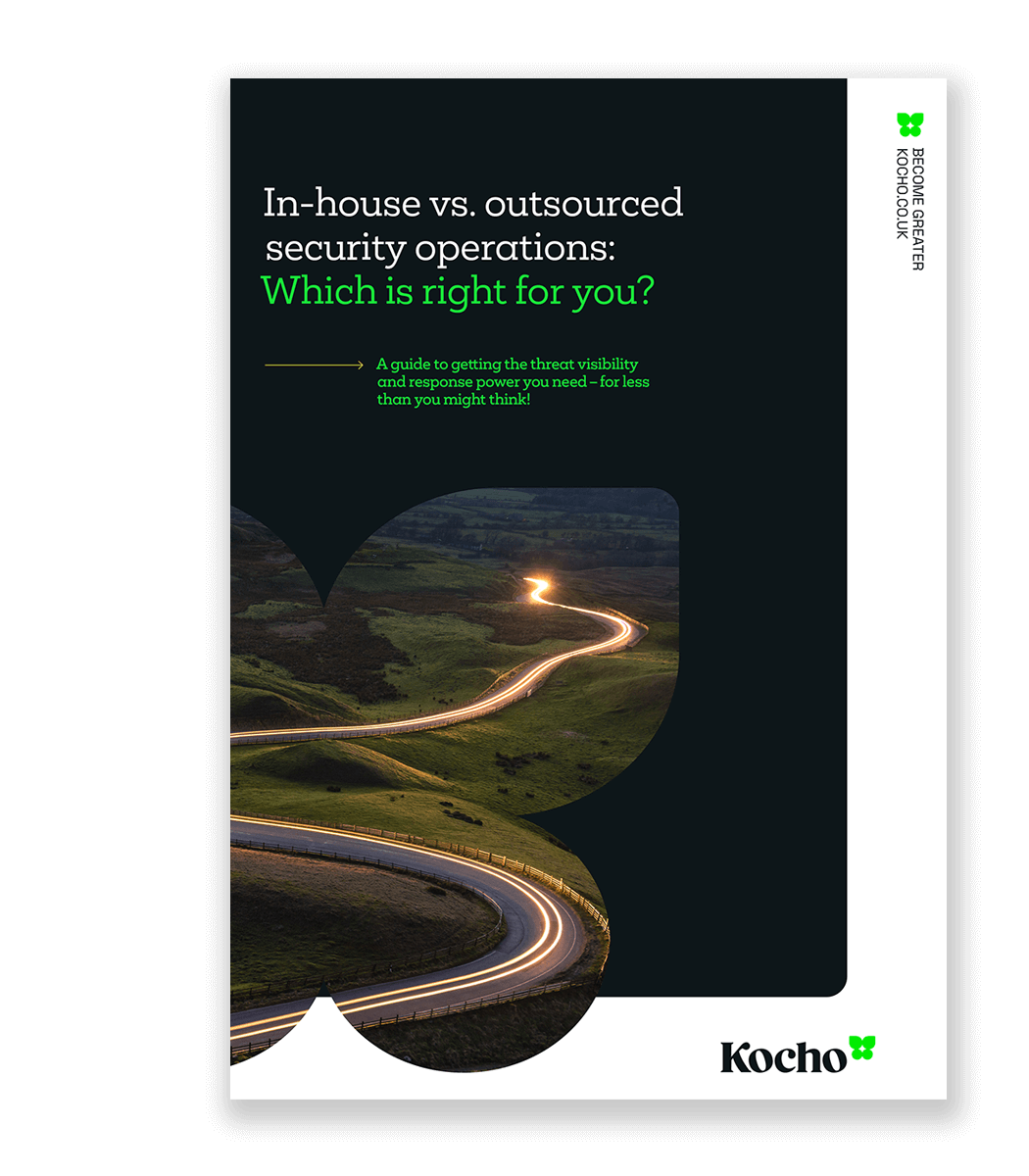Discover how AI and Microsoft’s Security Copilot are levelling the cyber security playing field, and bridging the skills gap for besieged security operations teams.
When it comes to modern day cyber security, organisations are increasingly finding the odds stacked against them.
Security operations (SecOps) teams are under relentless pressure. Cyber threats have reached unprecedented levels, with sophisticated attacks targeting ever-expanding and complex IT ecosystems.
And, just to add to the challenge, the industry is faced with a massive global shortage of skilled security experts.
The advancement in AI is enabling businesses to tackle these challenges head on, and to re-think in the way we tackle cyber security and threat protection.
And, it’s one of many reasons Microsoft have gone big on artificial intelligence (AI)
Benefits of Generative AI
If you’ve already used Chat GPT, you’re familiar with what Generative AI can do, based on the questions you ask, or ‘prompts’ you give it.
And SecOps teams are leveraging this exact capability for security analysts.
Generative AI combined with the vast threat intelligence capabilities of tools like Microsoft Sentinel, enable SecOps teams to respond and remediate at the scale and speed needed to stand up to modern threats.
These AI tools also provide laser-focused intelligence and insight that both empowers teams to make better decisions, while also serving to bridge the skills gap.
Let’s go through how this can be practically applied within your organisation

In-house vs. outsourced security: Which is right for you?
Understand the true cost, hidden risks, and potential savings.
Cyber security simplified
It’s one thing to leverage AI to analyse volumes of complicated data at lightning speed. But, generative AI takes this a step further.
You’ll be able to make sense of that data by giving Generative AI tools prompts in plain English.
This means you’ll be able to ask questions like:
- “What are the top vulnerabilities in my environment?”
- “How can I mitigate the risk of ransomware attacks?”
- “What are the best practices for securing my cloud apps?”
And your AI tools will give you clear, easy to understand answers in plain English.
On top of that, it can give you step-by-step instructions, resource links, and visualisations to help you understand those answers. And take the appropriate steps needed for any remediation.
Bringing hidden threats and future risks into view
Your AI tools can give you eyes and visibility on all the things you might miss, and help you see threats coming down the pipeline in the future.
Swift signal triage
Using Generative AI you can swiftly triage signals at machine speed, uncover hidden patterns, and get predictive guidance. This rapid analysis ensures that you won’t miss any threat.
Generative AI for advanced analysis
You can use Generative AI to delve into extensive datasets, identifying anomalies, correlations, and emerging trends.
Predictive threat guidance
Going beyond, it provides predictive advice based on Microsoft’s threat intelligence and security models. You can anticipate an attacker’s next move, strengthen your defences, and:
- Get alerted about emerging threats or potential attack campaigns.
- Receive recommendations to fortify your defences and prevent breaches.
- Learn effective actions to rapidly contain and eradicate threats.
How Kocho is applying AI within Security Operations
At Kocho, we’ve wasted no time embracing the capabilities of Generative AI tools.
We haven’t just used it to augment and multiply the capabilities of our analysts. Leveraging AI tools, we’ve been able to develop a new Azure Resource Manager (ARM) onboarding template.
This has helped speed up the onboarding process for new security operations clients. Allowing us to go from zero visibility over a clients ecosystem, to full control over an organisations’ Microsoft elements within hours.
Our previous onboard took approximately six weeks. This new improvement means we can give our clients peace of mind from day one.
Bridging the skill gap
Cyber security as a whole is facing a serious talent shortage. There’s a global need for 3.5 million skilled security workers that simply aren’t there.
And it’s not as simple as just hiring more people. It takes roughly six months to train a security analyst.
But that same analyst with minimal training, using AI can be effective almost immediately.
For example, Kusto Query Language (KQL) takes a significant time investment for an analyst to learn, and knowing it is a requirement for Kocho analysts.
However with Generative AI, a newer analyst can write proficient KQL requests almost straight away.
Generative AI acts as a force multiplier: For newer analysts, it helps to bridge that gap between their skills and the abilities they need to do their job.
As for qualified analysts, Generative AI also acts as a force multiplier. Giving them the ability to be on top of more security issues at once, and the ability to troubleshoot more quickly and accurately.
Thanks to the plain-language approach offered from generative AI, updates and closures for incidents have become streamlined.
Detailed reporting that’s easy to digest and understand
Another one of the great things about using Generative AI tools in your SecOps team is how easy it is to make sense of all of the security data you generate with it.
Using AI tools, your SecOps team can create customised reports that are free from jargon, and visually easily digested.
Allowing for concise incident summaries, all the way from opening, remediation, and the all important incident closure.
And if you want to present that information to others? That’s simple. You can ask your generative AI tools to summarise that information in any way you want. For example, a single PowerPoint slide.
This means you can present information about a specific incident, and how you fixed it in a way that someone without a security background can understand it. Such as members of the board, or to your clients.
At Kocho, we’ve effectively we’ve been very successful in leveraging these tools to nurture enhanced client interactions, building confidence for our clients.
They now have a clear understanding of exactly what it is we’re doing/have done to protect them. Thus improving client interactions, and fostering trust and confidence in our security measures.
Conclusion
With today’s IT environments becoming increasingly complex, the idea of a traditional fixed entry point for cyber attacks is woefully outdated.
Microsoft have already been leveraging AI and ML to keep up with evolving cyber security threats. Providing efficient and scalable defence mechanisms.
Now, SecOps teams can harness Generative AI technology to stay ahead of evolving cybersecurity threats.
This represents a significant evolution in the field of cyber security, pushing the boundaries further.
By leveraging the capabilities of Generative AI, SecOps teams can simplify incident management, accelerate analyst training, and bridge the growing skills gap in the cyber security sphere.
It signifies a paradigm shift in contemporary cyber security, offering comprehensive security solutions for an increasingly dangerous digital landscape.
Evening the odds for your SecOps team.
Key takeaways
Organisations face increasing cyber security challenges due to complex IT ecosystems and a shortage of skilled experts.
Generative AI tools can be leveraged to transform security operations teams and address the skills gaps in cyber security.
These tools can provide enhanced visibility of hidden threats, advanced data analysis, and predictive threat guidance, empowering proactive defence against cyber threats.
The plain English capability of Generative AI can make new security analysts effective almost immediately.
Generative AI make simplifies security reporting, making security insights more accessible to clients, board members, and anyone without a specialised security background.

In-house vs. outsourced security operations: Which is right for you?
Download your 35-page guide to discover:
- Costs and risks to build inhouse
- Potential security benefits and savings

Great emails start here
Sign up for free resources and exclusive invites
Subscribe to the Kocho mailing list if you want:
- Demos of the latest Microsoft tech
- Invites to exclusive events and webinars
- Resources that make your job easier



























Got a question? Need more information?
Our expert team is here to help.








